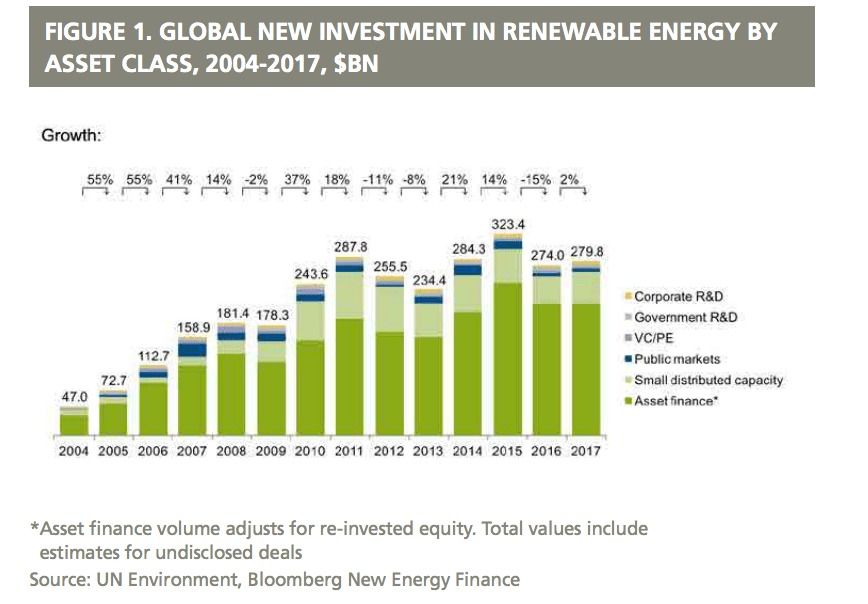Page 9509
Aug 16, 2018
NYU Offers Full-Tuition Scholarships for All Medical Students
Posted by Alexandria Black in categories: biotech/medical, education, finance
Doctor? Who?
New York University said Thursday that it will cover tuition for all its medical students regardless of their financial situation, a first among the nation’s major medical schools and an attempt to expand career options for graduates who won’t be saddled with six-figure debt [Editor’s note: the link may be paywalled]. From a report: School officials worry that rising tuition and soaring loan balances are pushing new doctors into high-paying fields and contributing to a shortage of researchers and primary care physicians. Medical schools nationwide have been conducting aggressive fundraising campaigns to compete for top prospects, alleviate the debt burden and give graduates more career choices. NYU raised more than $450 million of the roughly $600 million it estimates it will need to fund the tuition package in perpetuity, including $100 million from Home Depot founder Kenneth Langone and his wife, Elaine. The school will provide full-tuition scholarships for 92 first-year students — another 10 are already covered through M.D./PhD programs — as well as 350 students already partway through the M.D.-only degree program.
Aug 16, 2018
Two Industries in One Field
Posted by Steve Hill in categories: biotech/medical, engineering, life extension
Now that we are starting to see the arrival of actual therapies aimed at targeting the processes of aging directly in order to prevent age-related diseases, it has become easier to separate two very distinct groups.
The first group consists of the snake oil salesmen peddling unproven supplements and therapies to whoever is foolish enough to buy and take things on faith without using the scientific method. The hucksters have long been a plague on our field, preying on the gullible and tainting legitimate science with their charlatanry and nonsense. One example is the “biotech company” that makes bold claims yet never delivers on those claims in practice, offering data based on poorly designed experiments and tiny cohorts that are statistically irrelevant; another example is the supplement peddler selling expensive supplement blends with flashy names, which, on inspection, turn out to be commonly available herbs and minerals mixed and sold at a high markup. These sorts of people have plagued our community and given the field a reputation of snake oil.
The second group are the credible scientists, researchers, and companies who have been working on therapies for years and sometimes more than a decade. Many of these therapies are following the damage repair approach advocated by Dr. Aubrey de Grey of the SENS Research Foundation over a decade ago. The basic idea is to take an engineering approach to the damage that aging does to the body and to periodically repair that damage in order to keep its level below that which causes pathology. These therapies are now starting to arrive, with some already in human trials right now, and this marks a milestone in our field: the credible science has finally outstripped the snake oil, and the focus can move from pseudoscience to real, evidence-based science.
Aug 16, 2018
Global Renewable power spending has been virtually flat for seven years and most countries will need expensive grid upgrades to handle more solar and wind
Posted by Bill Kemp in categories: energy, sustainability
Global investment in renewable energy (Solar, Wind, Hydro and biofuel) edged up 2% in 2017 to $279.8 billion, taking cumulative investment since 2010 to $2.2 trillion. The level of global renewable power spending has been virtually flat for seven years. There has been an increase in overall installed renewable power each year because of the dropping prices. A 2% increase in spending has resulted in 10% increase in global installations from 2016 to 2017.
A record 157 gigawatts of renewable power capacity was commissioned in 2017, up from 143GW in 2016. This was more than the 70GW of net fossil fuel generating capacity added last year. However, the installed fossil fuel power generates more kilowatt hours because of the low capacity factors of solar and wind power.

Aug 16, 2018
Study to Help Develop Vibrant Future Commercial Space Economy
Posted by Klaus Baldauf in categories: economics, robotics/AI, space travel
Last week, NASA announced the awardees for an ongoing effort to foster commercial activity in space. This effort allows 13 companies to study the future of commercial human spaceflight in low-Earth orbit, including long-term opportunities for the International Space Station.
I’m pleased to share that NanoRacks is one of these awardees.
This study is not only a big step for NanoRacks, but a big step for the commercial space ecosystem. Today, we are the largest commercial user of the International Space Station and are proud of the impact we’ve made to help foster this ecosystem and bring customers from all over the world into to orbit. This study will allow us to take our vision to the next step and detail the viability for habitable and automated platforms for low-Earth orbit.
Aug 16, 2018
Mapping the future direction for quantum research
Posted by Genevieve Klien in category: quantum physics
The way research in quantum technology will be taken forward has been laid out in a revised roadmap for the field.
Published today in the New Journal of Physics, leading European quantum researchers summarise the field’s current status, and examine its challenges and goals.
In the roadmap:
Aug 16, 2018
Scientists discover chemical which can kill glioblastoma cells
Posted by Manuel Canovas Lechuga in categories: biotech/medical, neuroscience
Aggressive brain tumour cells taken from patients self-destructed after being exposed to a chemical in laboratory tests, researchers have shown.
The study could be the first step in tackling cancers like glioblastoma, which led to Dame Tessa Jowell’s death earlier this year.
The research, led by the University of Leeds, found that the synthetic chemical, named KHS101, was able to cut the energy source of tumour cells from glioblastoma, leading to the death of the cells.
Continue reading “Scientists discover chemical which can kill glioblastoma cells” »
Aug 16, 2018
Hologram Computers
Posted by Genevieve Klien in categories: 3D printing, augmented reality, biotech/medical, entertainment, holograms, quantum physics, robotics/AI, science, security, space travel, virtual reality, wearables
Computing innovation, computer-generated images, Virtual Reality Glasses, Hybrid Reality, communications, Holographic platform, AR, VR, PC, lifelike experience, 3D cameras, cosmic computing, computer security, gaming displays, in-flight entertainment, computer code, Holographic ideal/paradigm, gaming mechanics, automotive, medical, space, spatial, holographic memory, Artificial Neural Networks, Robotics, holographic 3D, software company, mixed-realty, holographic data, hologram monitors, hologram keyboards, voice equipment, projector system, Holographic apps, HD photography, smartphones, tablets, TVs, laptops, digital displays, 360 Video, Virtual Realty Headsets, Mobile Platforms, holographic universe, ubiquitous computing paradigm, virtual images, Holoquad, Holographic Projector Pyramid, cloud computing, spaceships, teleportation, anti-gravity devices, emulation, advanced technology, light field displays, Mobile Hologram Technology, computer programs, untethered, Immersive Technology, Computer Chips, Elohim computer, custom software, mobile application development, computing library, human-computer interactions, Artificial Neural Networks, holographic memory, Spider-Robots, pop-up gaming displays, automate machinery, computer-generated simulation, 3D Pyramid, consumer electronics, personal computers, holographic images, real-world objects, hardware interconnection, missionary, virtual assistant, Computer Systems Structure, two-dimensional computer display, computerization, Projection Screen, Portable, 3D printer, Hologram goggles, 3D Holographic Projection Technology, Hologram Computer Table, hologram generator, multilevel computer, mixed reality, Bluetooth enabled, Virtual Reality Display, transparent screen display, quantum computer, computer animation, 3D plasma display, meta surface, Dark Energy, holographic interferograms, photorefractive, Holographic atomic memory, computer-generated hologram, real-time hologram, x-ray mirror mandrels, virtual wavefront recording plane, Artificial intelligence, AI, Human Resources, Advertising, Animation, Graphic Web Design, Photography, Robotics, computer science, human-robot interaction, Emergency Medical Hologram, wearable computing, bio-computing, battlefield simulations, Holographic Associative Memory, artificial neural network, Digital Avatar.
Aug 16, 2018
Human wastewater valuable to global agriculture, economics, study finds
Posted by Bill Kemp in categories: economics, engineering, food, sustainability
It may seem off-putting to some, but human waste is full of nutrients that can be recycled into valuable products that could promote agricultural sustainability and better economic independence for some developing countries.
Cities produce and must manage huge quantities of wastewater. Researchers at the University of Illinois at Urbana-Champaign have developed a model to clarify what parts of the world may benefit most from re-circulation of human-waste-derived nitrogen, potassium and phosphorus from cities and back into farm fields. They report their findings in the journal Nature Sustainability.
“We grow our crops in the field, apply nutrient-rich fertilizers, eat the crops, excrete all of the nitrogen, phosphorus and potassium and then those nutrients end up at the wastewater treatment plant,” said Jeremy Guest, a civil and environmental engineering professor and study co-author. “It is a very linear, one-directional flow of resources. Engineering a more circular nutrient cycle would create opportunities that could benefit the environment, economy and agriculture.”
Continue reading “Human wastewater valuable to global agriculture, economics, study finds” »
Aug 16, 2018
A way to get green revolution crops to be productive without needing so much nitrogen
Posted by Bill Kemp in categories: bioengineering, food, genetics
A team of researchers from the Chinese Academy of Sciences, the Academy of Agriculture and Forestry Sciences in China and the University of Oxford in the U.K. has found a way to grow green revolution crops using less nitrogen with no reduction in yield. In their paper published in the journal Nature, the group describes their research efforts and the results they found when planting newly developed plant varieties. Fanmiao Wang and Makoto Matsuoka with Nagoya University offer a News & Views piece on the work done by the team in the same journal issue.
The green revolution was characterized by big increases in crop production in developing countries—it came about due to the increased use of pesticides, fertilizers and changes in crop varieties used. One of the changes to the crops came about as rice and wheat plants were bred to grow less tall to prevent damage from wind and rain. While this resulted in improved yields, it also resulted in the use of more nitrogen-based fertilizers, which are environmentally harmful. In this new effort, the researchers wondered if it might be possible to re-engineer green-revolution crop varieties in such a way as to restrict height and therefore retain high productivity, while also using nitrogen more efficiently.
Prior research had shown that proteins in the DELLA family reduced plant growth. Crop breeding in the 1960s led to varieties of rice and wheat with genetic mutations that allowed the proteins to build up in the plants, thus stunting their growth. Unfortunately, DELLA proteins have also been found to be the cause of inefficient nitrogen use in the same plants—as a result, farmers used more of it to increase yields. To overcome this problem, the researchers crossbred varieties of rice to learn more, and found that the transcription factor OsGRF4 was associated with nitrogen uptake. Using that information, they engineered some varieties of rice to express OsGRF4 at higher levels, which, when tested, showed higher uptake of nitrogen. The team then planted the varieties they had engineered and found that they required less nitrogen to produce the same yields—and they were just as stunted. They therefore claim that it is possible to grow green-revolution crops that require less nitrogen.


















